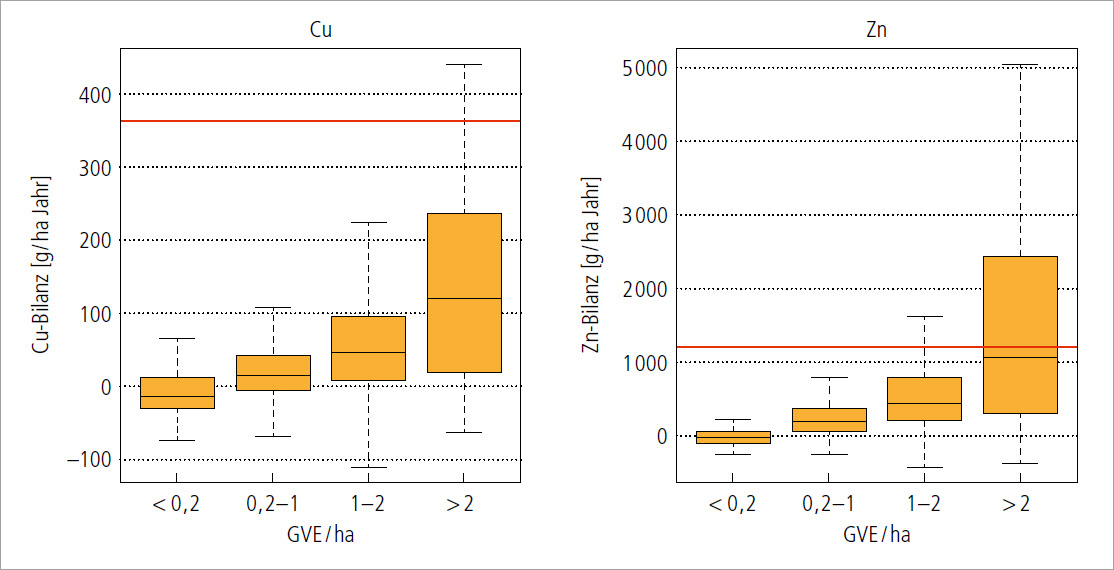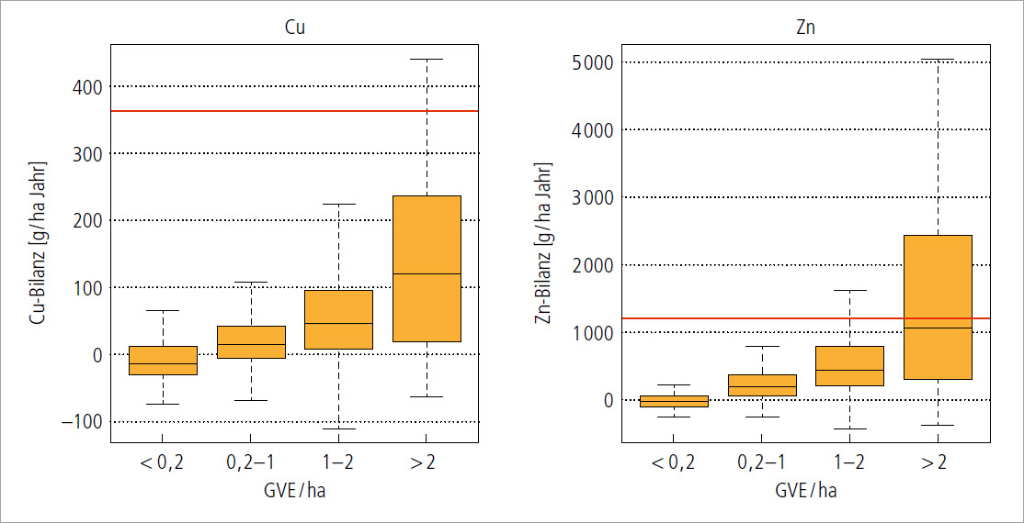Heavy metals find their way into the soil via fertilisers and plant-protection products, but also through atmospheric deposition. While via farmyard manures (slurry, dung) sizeable amounts of copper and zinc reach agricultural soils, contamination with additional heavy metals such as cadmium, uranium or lead can be an issue for mineral fertilisers. The agri-environmental indicator ‘Heavy-Metal Balance’ takes copper and zinc into consideration. While both are essential trace elements for flora and fauna, too high an input is harmful for the environment. Long-term data from NABO, the Swiss Soil Monitoring Network, prove the high relevance of copper and zinc, particularly in the context of intensive cattle production, but also for special crops, e.g in vegetable and fruit production and viticulture (Agrarbericht 2014).
Calculating the Heavy-Metal Balance
The heavy-metal balance is calculated for each plot of a farm and then aggregated on farm level. Fertilisers, plant-protection products and atmospheric deposition are considered inputs, the harvested crop the output. The data on heavy-metal concentrations in mineral fertilisers, plant-protection products and the harvested crop come from the literature and from studies conducted by Agroscope. The quantities and composition of the farmyard manures applied are estimated based on the number of animals on the farm.
The heavy-metal content of these manures is estimated on the basis of average concentration figures from studies conducted in Switzerland. Depending on the use of feed additives, the manure concentrations can vary significantly. To date, this has not been taken into account in the calculation, given the absence of the relevant data. Atmospheric deposition is estimated from deposition measurements, or from measurements made by the Swiss Moss Monitoring Programme. Both input and output are calculated as substance flows (mass per area and year). The balance relates to the soil surface; the displacement of copper and zinc into deeper soil strata is not taken into account.
Agrarbericht 2014, pp. 108-109
Contact
Agrarbericht 2014
Agrarbericht 2014 (PDF, 7 MB, 23.03.2021)Bundesamt für Landwirtschaft (BLW)







